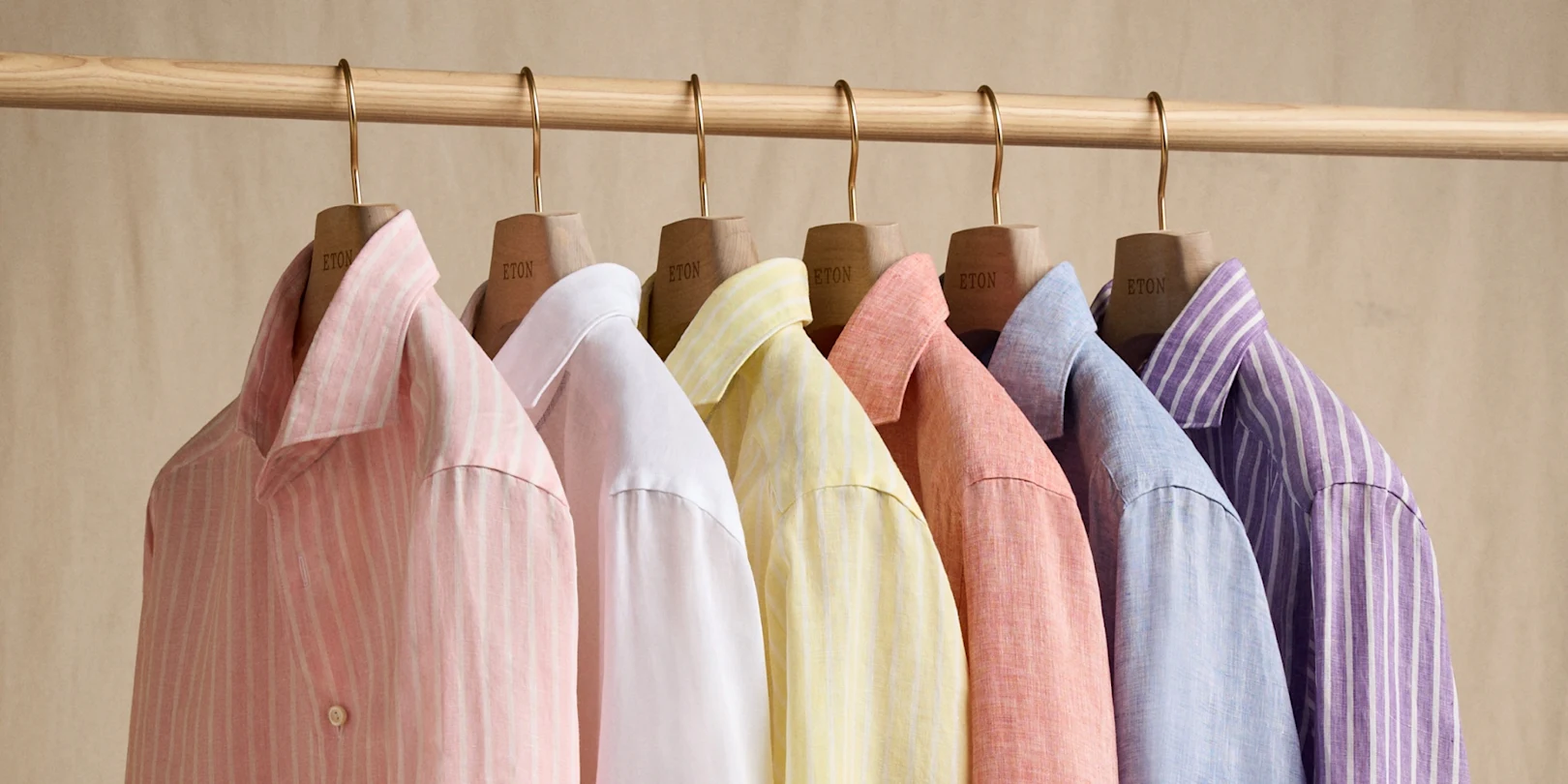Linen, woven from the flax plant, is one of the oldest and most enduring natural materials in the world. Renowned for its breathability and natural luster, linen offers great comfort, especially in warmer climates. Naturally breathable and absorbent, linen softens more over time—developing a unique character and relaxed feel with each wear. With the right care, your linen garments will retain their elegance and durability for years to come.
How to wash
Temperature matters: Always adhere to the care label instructions. Generally, wash linen at temperatures not exceeding 40°C (104°F) to prevent shrinkage and preserve the fabric's integrity. Hand wash is always preferred for extra gentle care.
Mild detergents please: Opt for gentle detergents free from bleach and optical brighteners. Remember, harsh chemicals can weaken linen fibers and cause discoloration.
Treat stains promptly: Spot-clean minor stains using a mild detergent or a solution of water and white vinegar. Avoid rubbing the fabric too harshly, as it can damage the fibers.
Separate colors: Wash light and dark linen garments separately to prevent color bleeding.
How to dry
Air dry recommended: Line drying is ideal for maintaining linen’s crisp feel. After washing, gently reshape the garment and hang it to dry in a shaded area. Avoid direct sunlight, which can cause colors to fade.
Tumble dry with caution: If using a tumble dryer, select a low-heat setting and remove garments while still slightly damp to avoid wrinkles and shrinkage. Keep in mind that tumble drying and heavy centrifuging will accelerate wear—use them sparingly to extend the life of your garment.
Ironing or steaming
Keep it damp: Iron linen garments while they are still slightly damp for optimal results.
Medium heat: If ironing, use a medium to hot iron setting. Always iron on the reverse side to protect the fabric's surface.
Steam for smoothness: Utilize the steam function or a spray bottle, or simply use a steamer to smoothen stubborn wrinkles.
Storing your linen
Proper storage: Always store your linen garments in a cool, dry place away from direct sunlight to avoid fading and/or fiber damage.
Avoid plastic: Use breathable materials like cotton bags or pillowcases. Avoid plastic, which can trap moisture and lead to mildew.
Maintain shape: If hanging, use wide wooden or padded hangers to help preserve the garment’s silhouette and avoid shoulder marks.
Pro tips:
Linen is more than just a fabric; it reflects the beauty of nature and the skill of fine craftsmanship. With proper care, your garments will continue to offer comfort and understated elegance season after season. Let your linen develop its natural character—each wrinkle, fold, and softening only adds to its charm.
Key highlights:
Origin & cultivation: Our linen is derived from premium European flax, grown in the temperate climates of France and Belgium — regions renowned for their sustainable, pesticide-free cultivation and flax farming traditions.
Fabric features: Naturally breathable, moisture-wicking, and hypoallergenic, linen is ideal for warmer climates and relaxed tailoring.
Sustainability: Linen is one of the most sustainable textiles available. It requires minimal water, no GMOs, and little to no chemical treatment. It is fully biodegradable and leaves a light environmental footprint.
Eton’s linen standards: Our linen garments are tailored with exacting precision — from refined French seams to mother-of-pearl buttons.
Distinctive style: At once relaxed and refined, whether worn pressed or with a soft wrinkle, it never loses its understated elegance.






